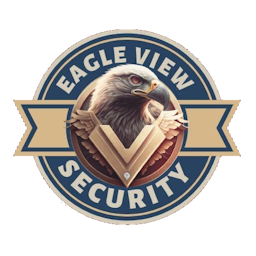IT SECURITY


Business Network & IT Security
Eagle View Security provides Computer Security Solutions. We design security information and event management (SIEM) software products and services for your company protection. In today s hyper-connected digital world, it s a given that all data is at risk, especially as your business begins growing with the number of technologies and digital workflows. To establish and maintain a deep level of trust with prospective and existing clients, you need to protect their confidential, sensitive data. Even high-ranking members of the Canadian and American Government intelligence community are vulnerable to hacking techniques such as phishing and social engineering. Moreover, your client data can be compromised by the innocent actions of employees who visit websites, download files, or click on an email link without realizing the potential dangers. So, it is your obligation to employ the best practices to secure client data and avoid landing in the news – and losing business.
The 8 Security Measures Recommended By Our Specialists
1. Verified Encryption When storing or sharing electronic files and documents, make sure to apply a security protocol or measure that encrypts the data both at rest and while in transit. One example is key cryptography, where the sender uses their “key” to encrypt a message, and the recipient uses their “key” to verify the identity of the person who sent the message/information and decrypt it. If your data is stored by a third-party provider – such as a hosting company in the cloud – make sure that company follows this best practice.
2. Information Access Control A common security measure is to grant information access only on an as-needed basis. In other words, every staff member in your business doesn t require access to every document and file. Once you ve determined who executes what responsibilities and the information they need to access, you – or the vendor managing your network and infrastructure – can assign appropriate information access privileges.
3.Network Security The goal of network security is to prevent threats from entering or spreading across your network, largely by managing access to it. A variety of technologies and policies are used to enable network security, including firewalls, antivirus software, email security software, intrusion prevention systems and more. The strongest network security is based on a layered – or defense-in-depth – approach that addresses every layer of the network.
4.Secure Data Storage Whether you store client information on servers, portable devices, in the cloud, or somewhere else, you need to make sure it s secure from tampering and access. In addition to the layered security mentioned above, common forms of protection include data encryption, access control mechanisms, data-corruption protection, and physical security.
5.Data Backups One threat to your client data is that you simply may lose it, whether because of accidental deletion, or due to a lost laptop or other issue. By regularly performing data backups and copying and archiving your electronic data, you will have a copy you can use in case of such losses.
6.Routine Maintenance Regularly maintaining your network and all the systems connected to it can go a long way toward keeping up strong security measures. The latest updates of operating systems and other software often includes new code to address the most recent known security threats.
7.Disaster Recovery In the event that your network or infrastructure is brought down by either a human-induced or natural event, disaster recovery makes it possible to continue operating. In a nutshell, it s a set of plans, policies and tools that make it possible for your business to resume operations quickly and efficiently in such situations.
8.Staff Education You can t expect your staff to avoid compromising activities and phishing scams and other social engineering tactics if they don t understand the dangers. Regularly educate your staff about security risks and preventative measures. This can include everything from the latest cybersecurity threats to best practices for Internet use; sharing, storing, and disposing of client data; reporting lost and stolen devices; and maintaining strong passwords.
